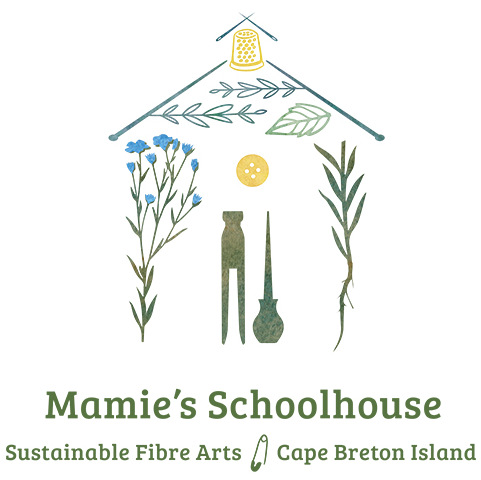Expecting To Fail
I decided to take part in this collaboration as something I could do as a homeschooling project with my kiddo.
We probably could have chosen a better or more promising dye recipe, but the mystery of creating a "fine excellent purple" from mulberries was such a curiosity that we had to try. Mulberries can make a short-lived dye that quickly fades in the light due to the anthocyanin colorants. Looking up anthocyanin as a dye was discouraging, so we chose not to research too much, and relied on what we had discovered already in science class. After all, making a pH scale with the anthocyanins of elderberries was an experiment we had played with since the early years of our homeschooling. We were tempted by the idea of rediscovering a method of making purple stick to the wool by ancient alchemy. The unique twist to our recipe of 'mordanting' the wool with unripe grapes caught our curiosity.
Our first conversations were filled with more questions about variables than a plan, and we quickly realized we would need to run multiple small tests to determine the direction of our final project. This was homeschool science lab after all, and seeing the results was our goal, lightfast or not.
To make things repeatable and practical for the modern dye pot, we decided to use the wild fox grapes near our home, and to pick them the same week as the mulberries were ripe. We thought that should give us unripe enough grapes, and made sense for a historical dyer to be sourcing materials in a similar time-frame, without the need for long term storage. This presented a problem however. Our recipe called for mulberry juice. Should it be fresh pressed? Left to ferment slightly? Fully wine or vinegar?
We decided to freeze our mulberries until we could settle on a plan,and focused on the 'mordant' process.
Our recipe instructed us to crush unripe bunches of grapes and add wool to this for three days, only heating it on the third day. It called it a mordant. This was a messy process. They were like hard marbles with very little juice, and popping them by hand stung a touch due to the acidity. It also sent them shooting across the room! We decided to crush them in a plastic baggie and were able to harvest 4 tablespoons of the precious liquid that way.
We used two jars for our 'mordant' bath. In one we had undiluted juice from the grapes, in the other we placed the grapes and covered them with water calling it diluted.
We let them set at room temperature for the three days with wool roving and homespun yarn added, and then the fourth day we put them in the sun to heat. We observed that the heating was likely to keep the natural organisms from traveling on to the next stage of the recipe after we found a layer of something organic growing on the surface of the jar that still had grapes in it.
There was a slight difference between the two mordant jars after the wool was removed and washed, but the there was a big difference between them and the wool that had not been in the mordant.
Now, if we can settle on how to go about using the mulberry juice, we might be even closer to answering the question... will our dye fail? And was it meant to mislead the customer in historical times, promising purples that were known to come from the Murex snails?
Wool dyed with Murex
by Mohammed Ghassan Nouria
We were fortunate to meet a gentleman, Mohammed Ghassan Nouria, who has been recreating the purple of the Murex snails. He sent us some fiber from Tunisia, and it will help us see if our purple is close enough to the real thing to be deceptive, or if the wool is its own unique shade. This is turning into quite the opportunity for my student to learn geography and history alongside science.
Testing the mulberry on silk and paper
After much thought and discussion we decided to pretest our mulberries and see if any of our combinations kept enough color to be worth our while exploring further. We had two of our variables that looked promising, and discovered all of our variables started to ferment after two days, even if they had been heated or left in the sun. This led us to think that fresh juice was unlikely, unless the mulberries were pressed on site at the dye house. The recipe said to boil the juice twice before adding the wool, and we settled on the crock pot and the sun for heat sources. In the dye house in ancient times they might have been heating with wood, we imagined, and the twice boil could mean to feed the fire twice, so we chose to heat and cool for two days. The only thing we could see that accomplishing was a settling of sediment in the juice by the second day.
Our minds were swimming at this point, and we had to focus. What had started as a simple thought was quickly becoming complicated for an expected failure. We put untreated homespun in all of our mulberry juice jars ( six at this point) and only put unripe grape 'mordant' fiber in the two promising jars. These were heated in the sun and crock pot, and allowed to cool overnight once again.
Wet wool removed from the dye baths and awaiting washing
While our wool looked promising coming out of the dye pot we knew that it isn't expected to last, so we will watch as it dries and see which of our six jars holds the most promise before completing our final project.
Expecting to fail, was it really worth all this time and energy? We still think yes, and figure we will learn something along the way, and maybe even rediscover something amazing.







